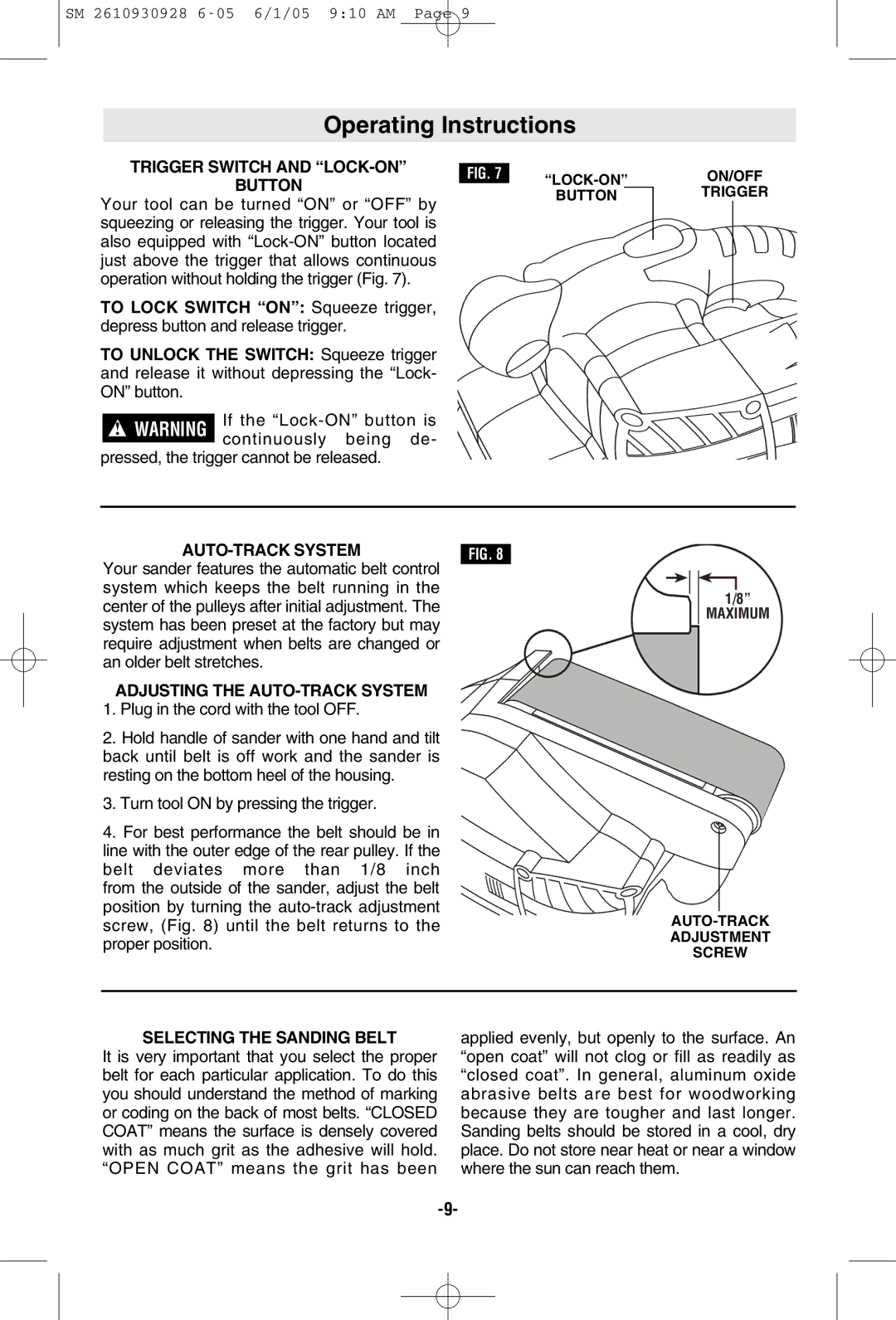
SM 2610930928 6-05 6/1/05 9:10 AM Page 9
Operating Instructions
| TRIGGER SWITCH AND |
|
|
|
| |
|
| FIG. 7 |
| |||
|
| BUTTON |
|
| ||
|
|
|
|
| ||
Your tool can be turned “ON” or “OFF” by |
| BUTTON | ||||
|
|
| ||||
squeezing or releasing the trigger. Your tool is |
|
|
| |||
also equipped with |
|
|
| |||
|
|
| ||||
just above the trigger that allows continuous |
|
|
| |||
operation without holding the trigger (Fig. 7). |
|
|
| |||
TO LOCK SWITCH “ON”: Squeeze trigger, |
|
|
| |||
depress button and release trigger. |
|
|
|
| ||
TO UNLOCK THE SWITCH: Squeeze trigger |
|
|
| |||
and release it without depressing the “Lock- |
|
|
| |||
ON” button. |
|
|
|
| ||
|
| If the |
|
|
| |
| ! WARNING |
|
|
| ||
| continuously being | de- |
|
|
| |
|
|
|
|
| ||
pressed, the trigger cannot be released. |
|
|
|
| ||
ON/OFF
TRIGGER
| FIG. 8 |
Your sander features the automatic belt control system which keeps the belt running in the center of the pulleys after initial adjustment. The system has been preset at the factory but may require adjustment when belts are changed or an older belt stretches.
ADJUSTING THE
2. Hold handle of sander with one hand and tilt back until belt is off work and the sander is resting on the bottom heel of the housing.
3.Turn tool ON by pressing the trigger.
4.For best performance the belt should be in line with the outer edge of the rear pulley. If the
belt deviates more than 1/8 inch from the outside of the sander, adjust the belt position by turning the
1/8”
MAXIMUM
SELECTING THE SANDING BELT
It is very important that you select the proper belt for each particular application. To do this you should understand the method of marking or coding on the back of most belts. “CLOSED COAT” means the surface is densely covered with as much grit as the adhesive will hold. “OPEN COAT” means the grit has been
applied evenly, but openly to the surface. An “open coat” will not clog or fill as readily as “closed coat”. In general, aluminum oxide abrasive belts are best for woodworking because they are tougher and last longer. Sanding belts should be stored in a cool, dry place. Do not store near heat or near a window where the sun can reach them.
